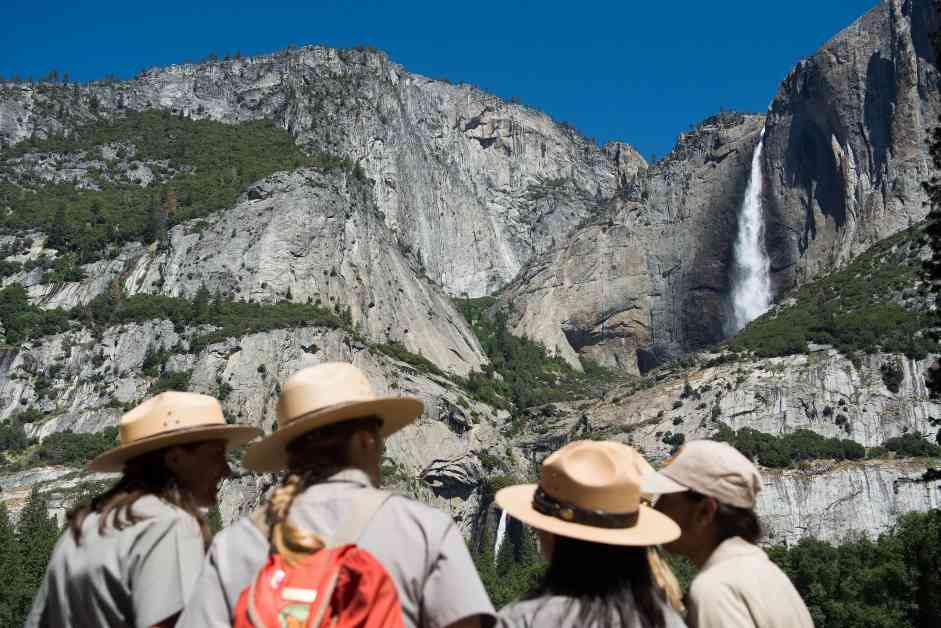Stuart Garbett, a dedicated seasonal wilderness ranger with the U.S. Forest Service, found himself in the midst of an unexpected turn of events last week. His routine of maintaining the Bridger-Teton National Forest in western Wyoming was abruptly halted when an email notified him and thousands of other probationary employees about their impending termination. The news came as a shock, especially as Garbett was in anticipation of a permanent position after years of service in the wilderness. The reality hit hard when he was officially let go last Friday, leaving him at a loss for words.
The Forest Service and National Parks Service, collectively overseeing vast amounts of U.S. land, experienced a significant blow with these layoffs. This move is part of a broader restructuring within the federal government aimed at enhancing efficiency and productivity, as outlined in an executive order by President Donald Trump. The impact of these layoffs has been felt across various federal agencies, including the Environmental Protection Agency, Department of Education, Department of Homeland Security, and Department of Veterans Affairs. The consequences of these staff cuts are far-reaching and could have detrimental effects on the management of public lands and wildlife conservation efforts.
Struggling Agencies and Looming Consequences
The Forest Service and National Parks Service have been grappling with ongoing challenges, including budget constraints that led to a freeze on many seasonal positions. Despite record-high visitor numbers, the agencies have faced staffing shortages that have raised concerns about their ability to effectively maintain the landscapes. The recent wave of layoffs has only exacerbated these issues, leaving many areas understaffed and ill-equipped to handle the demands of park management.
In response to the backlash, the Department of the Interior has pledged to hire thousands of seasonal employees to address the staffing shortages at national parks. However, the long-term implications of these layoffs remain a cause for concern among experts. The loss of experienced personnel and the disruption of essential conservation programs could have lasting effects on public lands and the diverse wildlife that call these areas home.
Implications for Wildlife Conservation
The impact of the recent staff cuts extends beyond human employees to the realm of wildlife conservation. With many endangered and threatened species relying on the stewardship of federal agencies like the NPS and Forest Service, the loss of specialized personnel could have dire consequences. Endangered species biologists, like Andria Townsend at Yosemite National Park, play a crucial role in monitoring and protecting vulnerable wildlife populations. The discontinuation of vital conservation programs could jeopardize the survival of these species and hinder critical research efforts.
The northern spotted owl, an emblematic species of the Pacific Northwest, faces additional challenges due to the staffing shortages. Monitoring programs that track the owl’s population dynamics and habitat conditions are now at risk due to the lack of seasonal workers to maintain and operate essential monitoring equipment. The implications of these disruptions extend beyond immediate conservation efforts, impacting the long-term viability of species and ecosystems across the country.
As the repercussions of these staff cuts continue to unfold, the future of public lands and wildlife conservation remains uncertain. The ripple effects of these layoffs are felt not only by federal employees like Stuart Garbett but also by the fragile ecosystems and imperiled species that rely on their expertise and dedication. The need for sustained support and investment in conservation efforts has never been more critical, as the consequences of short-sighted decisions threaten to undermine the legacy of environmental stewardship in the United States.














